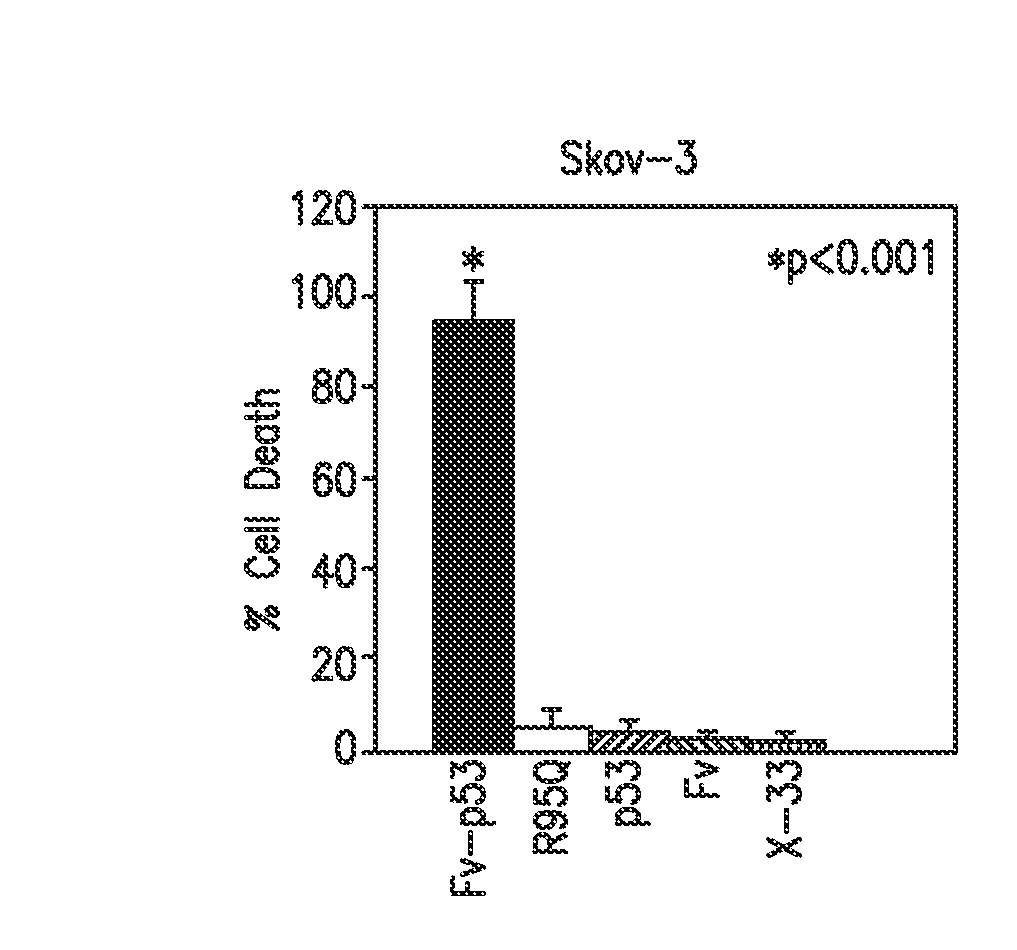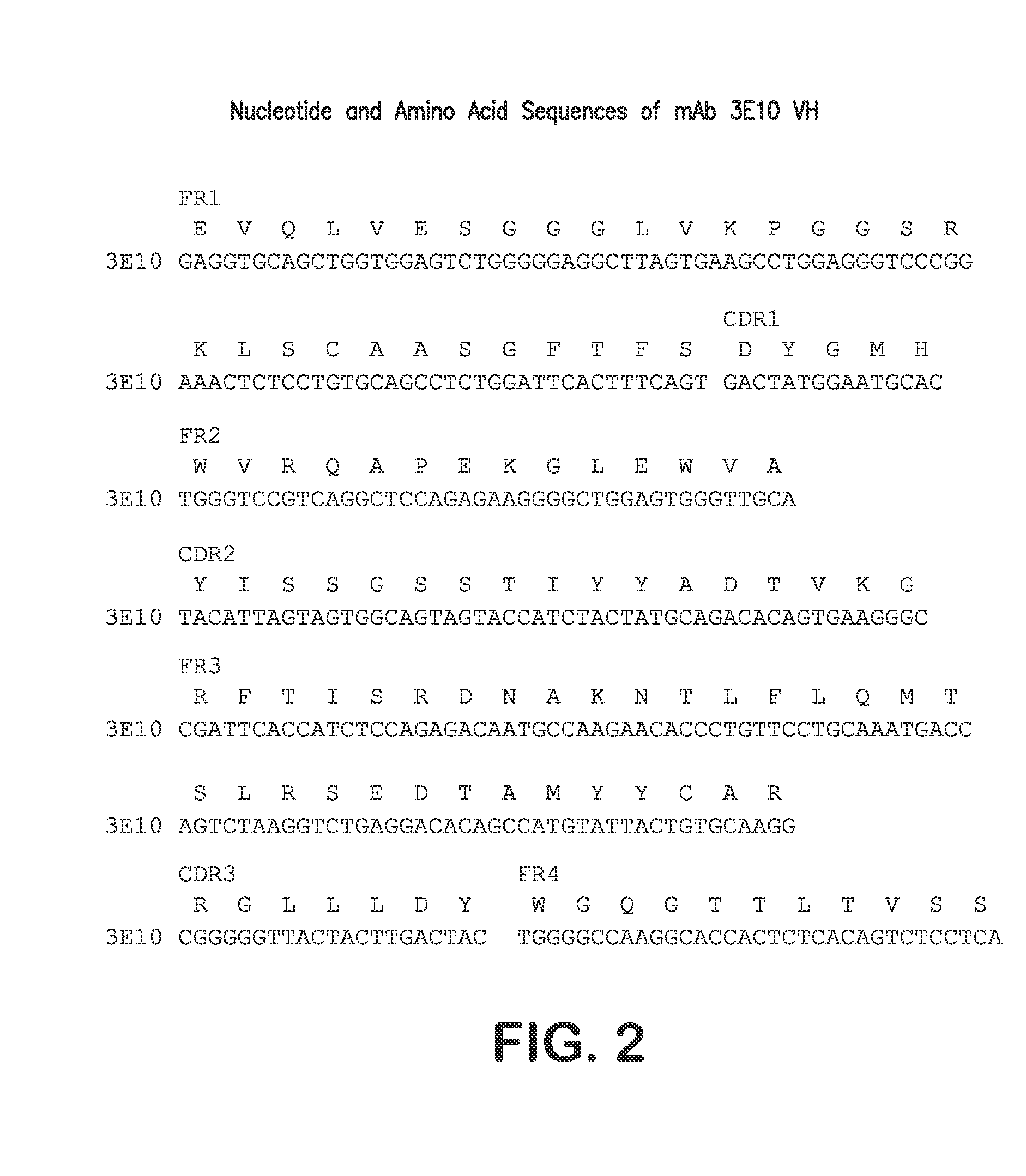Use of Antibody Conjugates
a technology of conjugates and antibodies, applied in the field of cancer treatment, can solve the problems of limited expression, ineffective delivery of genes to cells, and limited protein therapy, and achieve the effect of preventing colon carcinoma cell metastasis and effective cell death
- Summary
- Abstract
- Description
- Claims
- Application Information
AI Technical Summary
Benefits of technology
Problems solved by technology
Method used
Image
Examples
example 1
[0063]In the present study, in vitro experiments have been extended to include additional control proteins to verify that Fv-p53 is the factor responsible for cell killing in cancer cell lines. Furthermore, Fv-p53 protein therapy was tested in vivo and found it strikingly effective in preventing metastasis of colon carcinoma cells to the liver. Specifically, clinical efficacy of monoclonal antibody (mAb) 3E10 Fv antibody-mediated p53 protein therapy was evaluated by testing an Fv-p53 fusion protein produced in Pichia pastoris on CT26.CL25 colon cancer cells in vitro and in vivo in a mouse model of colon cancer metastasis to the liver. In vitro experiments showed killing of CT26.CL25 cells by Fv-p53, but not Fv or p53 alone, and immunohistochemical staining confirmed that Fv was required for transport of p53 into cells. Prevention of liver metastasis in vivo was tested by splenic injection of 100 nmol / L Fv-p53 at 10 min and 1 week after injection of CT26.CL25 cancer cells into the po...
PUM
| Property | Measurement | Unit |
|---|---|---|
| pH | aaaaa | aaaaa |
| pH | aaaaa | aaaaa |
| area | aaaaa | aaaaa |
Abstract
Description
Claims
Application Information
 Login to View More
Login to View More - R&D
- Intellectual Property
- Life Sciences
- Materials
- Tech Scout
- Unparalleled Data Quality
- Higher Quality Content
- 60% Fewer Hallucinations
Browse by: Latest US Patents, China's latest patents, Technical Efficacy Thesaurus, Application Domain, Technology Topic, Popular Technical Reports.
© 2025 PatSnap. All rights reserved.Legal|Privacy policy|Modern Slavery Act Transparency Statement|Sitemap|About US| Contact US: help@patsnap.com



